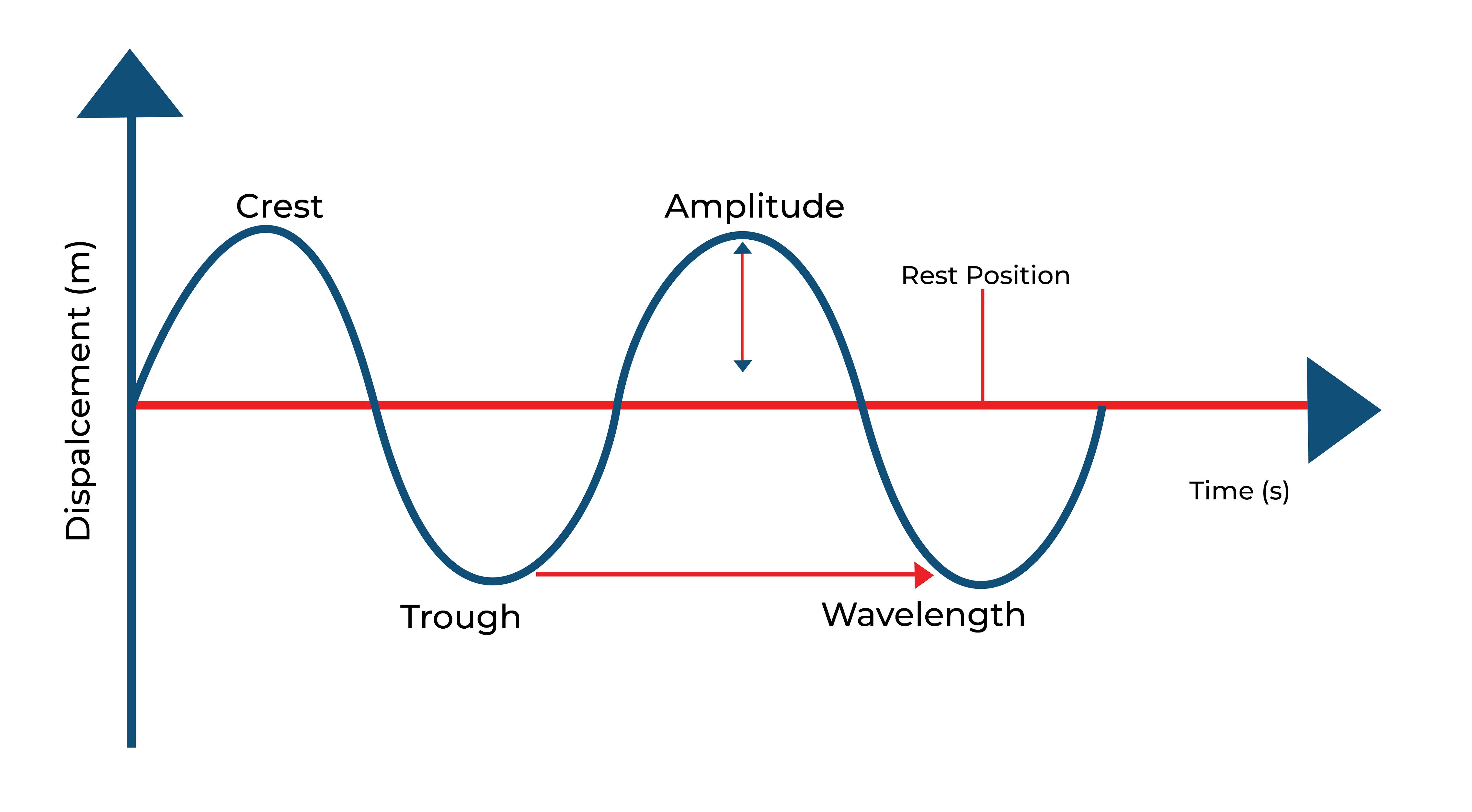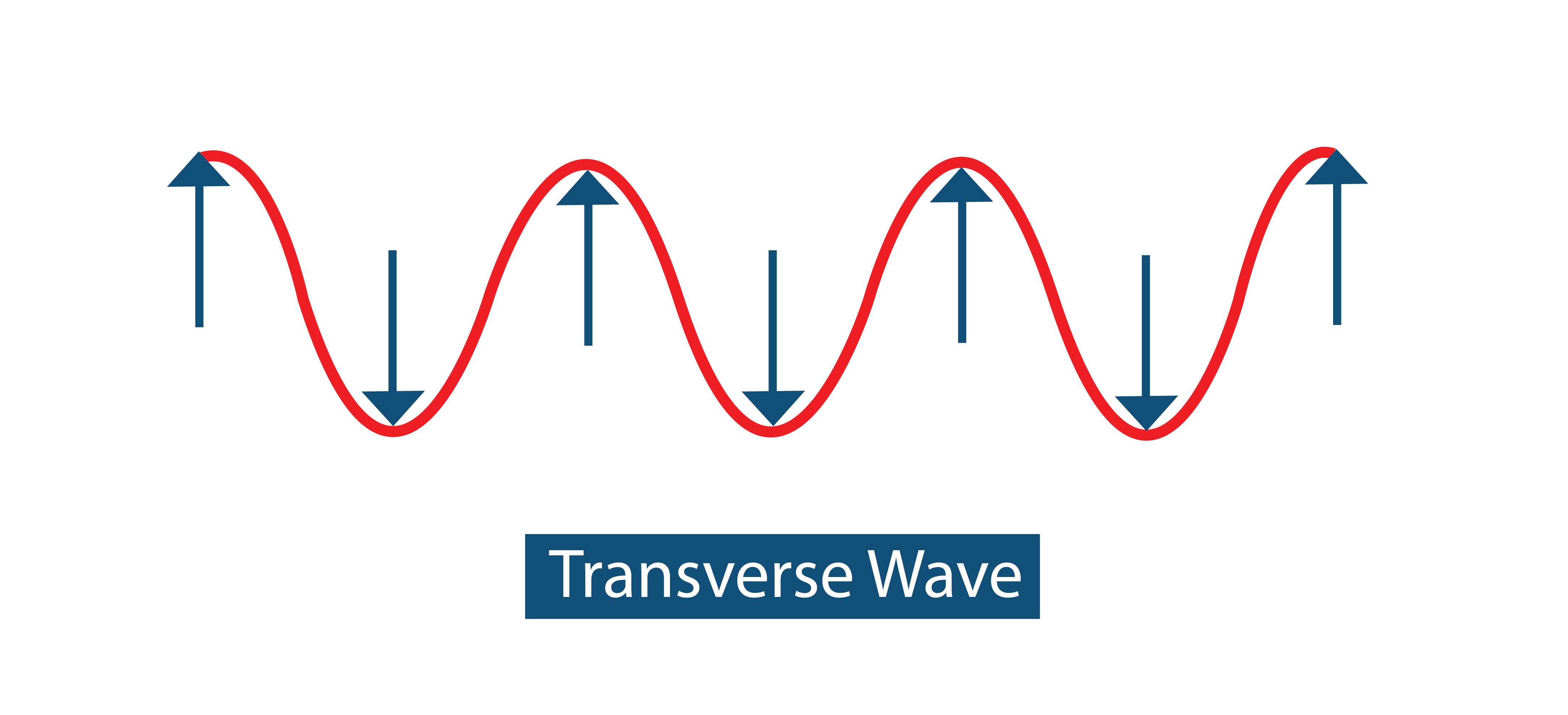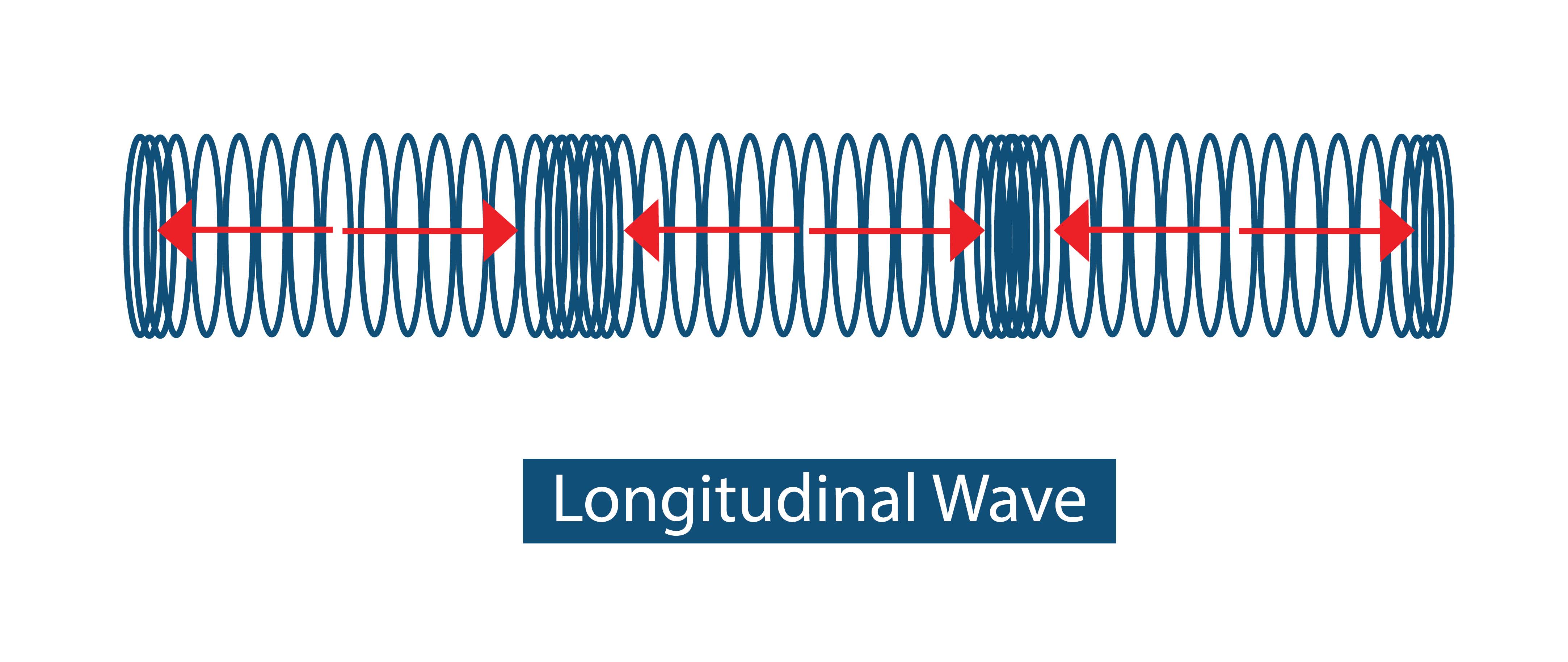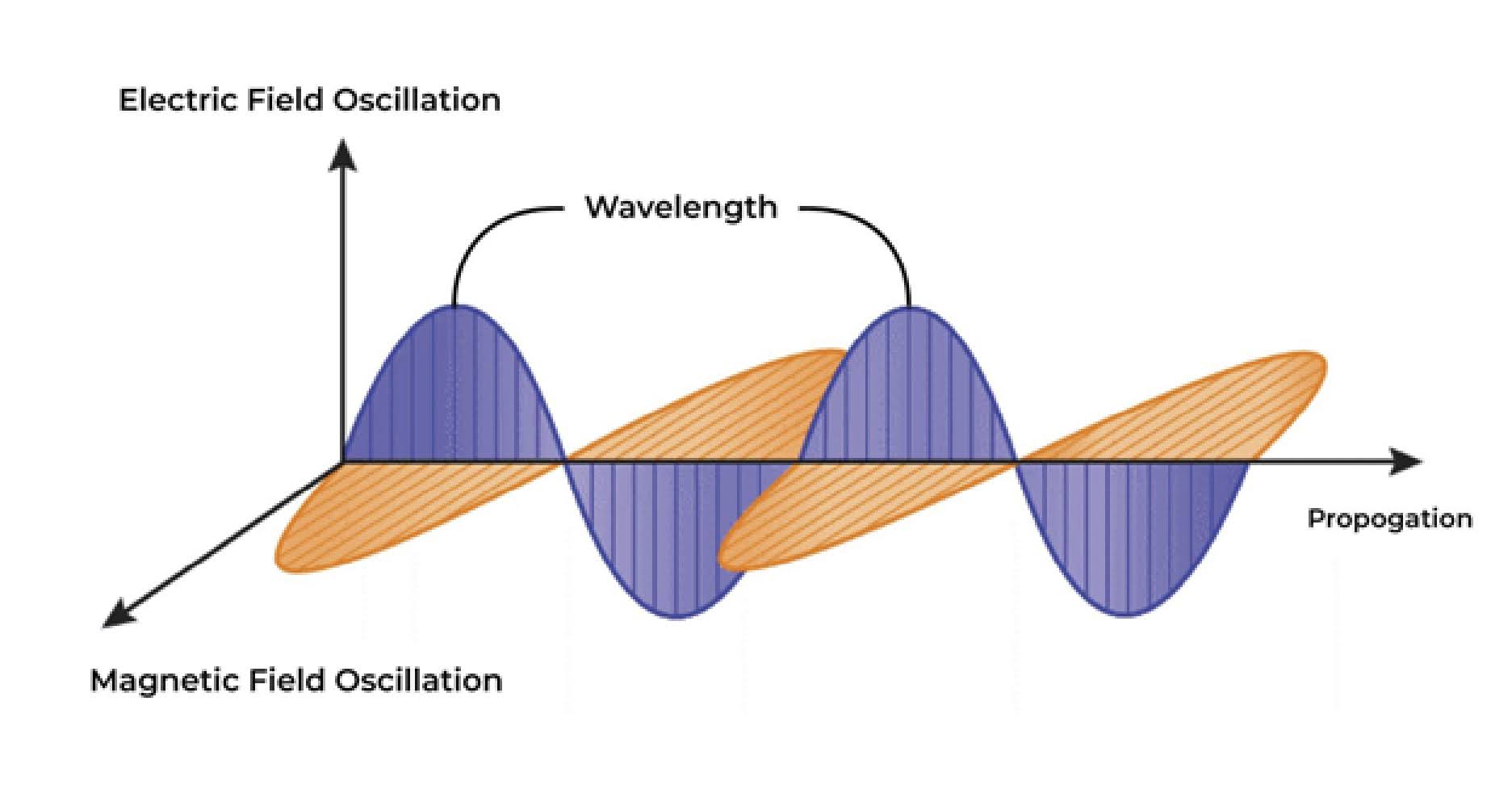Mechanical waves
Grade 6 Science Worksheets
Mechanical waves are waves that require a physical medium to travel through. This means that they can only propagate through a material substance, such as a solid, liquid, or gas, and they cannot travel through a vacuum.
Table of contents:
- Mechanical waves
- Types of mechanical waves
- Propogation of mechanical waves
- Non-mechanical waves
- Difference between mechanical & non-mechanical waves
- FAQs
Mechanical waves - Grade 6 Science Worksheet PDF
This is a free printable / downloadable PDF worksheet with practice problems and answers. You can also work on it online.
|
Untimed | |
Sign up with your email ID to access this free worksheet.
"We really love eTutorWorld!"
"We really love etutorworld!. Anand S and Pooja are excellent math teachers and are quick to respond with requests to tutor on any math topic!" - Kieran Y (via TrustSpot.io)
"My daughter gets distracted easily"
"My daughter gets distracted very easily and Ms. Medini and other teachers were patient with her and redirected her back to the courses.
With the help of Etutorworld, my daughter has been now selected in the Gifted and Talented Program for the school district"
- Nivea Sharma (via TrustSpot.io)
Mechanical Waves
Mechanical waves can be either longitudinal or transverse in nature. In a longitudinal wave, the particles of the medium vibrate in the same direction as the wave is traveling, while in a transverse wave, the particles vibrate perpendicular to the direction of the wave. Examples of mechanical waves include sound waves, which are longitudinal waves that propagate through air or other materials, and water waves, which are transverse waves that propagate through water.

Types of Mechanical Waves
here are two main types of mechanical waves: transverse waves and longitudinal waves.
Transverse waves: In transverse waves, the particles of the medium vibrate perpendicular to the direction of wave propagation. The best example of transverse waves is water waves, in which the water particles move up and down as the wave moves forward.

Other examples of transverse waves include electromagnetic waves, such as light and radio waves, which also propagate transversely.
Longitudinal waves: In longitudinal waves, the particles of the medium vibrate parallel to the direction of wave propagation. This means that the particles move back and forth in the same direction as the wave travels.

A good example of a longitudinal wave is a sound wave, in which air particles move back and forth in the direction of the sound wave. Other examples of longitudinal waves include seismic waves, such as P-waves, which propagate through the earth’s crust during an earthquake.
Both transverse and longitudinal waves have different properties, including their wavelength, frequency, amplitude, and speed of propagation. These properties determine the behavior of the waves and their interactions with the environment.
Both types of waves are essential to our understanding of the physical world and have practical applications in fields such as acoustics, engineering, and seismology.
Here are some examples of transverse and longitudinal waves:
Transverse waves:
Water waves,Electromagnetic waves (e.g., light and radio waves), and Seismic S-waves (secondary waves)
Longitudinal waves:
Sound waves in air, water, or solids
Seismic P-waves (primary waves)
Ultrasound waves used in medical imaging
Shock waves, such as those produced by an explosion or a supersonic aircraft
In general, transverse waves are characterized by perpendicular oscillations of the medium in relation to the direction of wave propagation, while longitudinal waves involve parallel oscillations of the medium in the same direction as the wave is traveling.
Both types of waves have unique properties and are used in various fields, such as communication, engineering, and medical diagnostics.
Propogation of mechanical waves
Mechanical waves propagate through a medium by transferring energy from one particle of the medium to the next.
When a source, such as a vibrating object, creates a mechanical wave, it causes the particles of the medium to vibrate back and forth in a periodic motion. These vibrations then propagate through the medium as a wave, carrying energy along with them.
In a transverse wave, the particles of the medium move up and down in a perpendicular direction to the direction of wave propagation. As the wave travels, each particle transfers its energy to the neighboring particles in the same direction of the wave. The energy transfer causes a disturbance that propagates through the medium as a wave.
In a longitudinal wave, the particles of the medium move back and forth in the same direction as the wave is traveling. As the wave moves, each particle transfers its energy to the neighboring particles in the same direction of the wave. This energy transfer causes a compression (increased density) and rarefaction (decreased density) of the medium, which propagates through the medium as a wave.
some examples of mechanical waves such as-Water waves: These are mechanical waves that propagate on the surface of bodies of water. They can be both transverse and longitudinal in nature, depending on the type of wave.
Seismic waves: These are mechanical waves that propagate through the Earth’s crust and are caused by earthquakes, volcanic eruptions, and other geological events. There are two main types of seismic waves: P-waves (primary waves) and S-waves (secondary waves).
Tidal waves: Also known as tsunamis, these are large, long-wavelength waves that are caused by disturbances in bodies of water, such as earthquakes or landslides.
Surface waves: These are mechanical waves that propagate along the surface of a medium, such as the ground or a solid object. They can be both transverse and longitudinal in nature.
Ultrasonic waves: These are mechanical waves that have a frequency higher than the upper limit of human hearing (20,000 Hz). They are used in a variety of applications, including medical imaging, non-destructive testing, and cleaning.
These are just a few examples of the many types of mechanical waves that exist. Each type of wave has unique properties and behaviors, and they can be used in a variety of practical applications in fields such as acoustics, engineering, and geology.
“There have been times when we booked them last minute, but the teachers have been extremely well-prepared and the help desk at etutorworld is very prompt.
Our kid is doing much better with a higher score.”
6th Grade Tutoring
eTutorWorld offers Personalized Online Tutoring for Math, Science, English, and Standardised Tests.
Our Tutoring Packs start at just under $22.49 per hour, and come with a moneyback guarantee.
Schedule a FREE Trial Session, and experience quality tutoring for yourself. (No credit card required.)
Non-mechanical waves
Non-mechanical waves are waves that do not require a medium to propagate. Unlike mechanical waves, which require a material medium to travel through, non-mechanical waves can travel through a vacuum, such as empty space.
There are two main types of non-mechanical waves: electromagnetic waves and gravitational waves.
Electromagnetic waves: Electromagnetic waves are waves that consist of oscillating electric and magnetic fields. They are produced by charged particles, such as electrons, and can travel through a vacuum at the speed of light.
Examples of electromagnetic waves include radio waves, microwaves, infrared radiation, visible light, ultraviolet radiation, X-rays, and gamma rays.

Gravitational waves: Gravitational waves are ripples in the fabric of space-time caused by the acceleration of massive objects, such as black holes or neutron stars. They were predicted by Albert Einstein’s theory of general relativity and were first detected in 2015. Gravitational waves can also travel through a vacuum.
Both electromagnetic and gravitational waves have unique properties that distinguish them from mechanical waves.
For example, they do not require a medium to propagate, they can travel at the speed of light, and they can have very high frequencies or long wavelengths.
These properties make non-mechanical waves important for many scientific applications, such as communication, remote sensing, and astronomy.
Difference between mechanical & non-mechanical waves
The main difference between mechanical waves and non-mechanical waves is that mechanical waves require a medium to propagate, whereas non-mechanical waves do not.
Mechanical waves are waves that require a material medium to travel through. They are produced by the vibration of particles in the medium and transfer energy from one particle to the next.
Examples of mechanical waves include sound waves, water waves, and seismic waves.
Non-mechanical waves, on the other hand, do not require a medium to travel through. They can propagate through a vacuum and are not produced by the vibration of particles in a material medium.
Examples of non-mechanical waves include electromagnetic waves and gravitational waves.
Another difference between mechanical waves and non-mechanical waves is the speed at which they travel. Mechanical waves travel at different speeds through different materials and are subject to interference, reflection, and refraction.
Non-mechanical waves, on the other hand, travel at a constant speed in a vacuum and are not subject to interference, reflection, and refraction in the same way as mechanical waves.
In summary, the main differences between mechanical waves and non-mechanical waves are the requirement of a material medium, the way they are produced, and their speed and behavior when propagating through different media.
Do You Stack Up Against the Best?
If you have 30 minutes, try our free diagnostics test and assess your skills.
FAQS
What are mechanical waves?
Mechanical waves are waves that require a material medium to propagate. They are produced by the vibration of particles in the medium and transfer energy from one particle to the next.
What are the two types of mechanical waves?
The two types of mechanical waves are transverse waves and longitudinal waves.
What is the difference between transverse and longitudinal waves?
In a transverse wave, the particles of the medium move perpendicular to the direction of wave propagation, while in a longitudinal wave, the particles of the medium move parallel to the direction of wave propagation.
What is the speed of mechanical waves?
The speed of mechanical waves depends on the properties of the medium, such as its density, elasticity, and viscosity.
What is the relationship between frequency and wavelength of a wave?
The frequency and wavelength of a wave are inversely proportional. As the frequency increases, the wavelength decreases, and vice versa.
What is the relationship between the amplitude and energy of a wave?
The amplitude of a wave is directly proportional to the energy it carries. Waves with larger amplitudes carry more energy than waves with smaller amplitudes.
How do mechanical waves interact with boundaries and obstacles?
Mechanical waves can be reflected, refracted, and diffracted when they encounter a boundary or an obstacle.
What are some examples of mechanical waves?
Some examples of mechanical waves include sound waves, water waves, seismic waves, and waves on strings and springs.
What are some applications of mechanical waves?
Mechanical waves have many practical applications, such as in communication (e.g., radio waves), medical imaging (e.g., ultrasound waves), and earthquake detection (e.g., seismograms).
Can mechanical waves interfere with each other?
Yes, mechanical waves can interfere with each other. When two waves meet, they can either reinforce or cancel each other, depending on their amplitudes and phases. This is known as wave interference.

Kathleen Currence is one of the founders of eTutorWorld. Previously a middle school principal in Kansas City School District, she has an MA in Education from the University of Dayton, Ohio. She is a prolific writer, and likes to explain Science topics in student-friendly language. LinkedIn Profile
Affordable Tutoring Now Starts at Just $22.49
eTutorWorld offers affordable one-on-one live tutoring over the web for Grades K-12. We are also a leading provider of Test Prep help for Standardized Tests (SCAT, CogAT, MAP, SSAT, SAT, ACT, ISEE, and AP).
What makes eTutorWorld stand apart are: flexibility in lesson scheduling, quality of hand-picked tutors, assignment of tutors based on academic counseling and diagnostic tests of each student, and our 100% money-back guarantee.
Whether you have never tried personalized online tutoring before or are looking for better tutors and flexibility at an affordable price point, schedule a FREE TRIAL Session with us today.
*There is no purchase obligation or credit card requirement
Grade 6 Science Worksheets
- Inquiry process
- Nature of Science
- Scientific Inquiry
- Inquiry, Analysis and Problem Solving
- Ethical Practices
- Science and Society
- Biotic and Abiotic Factors
- Impact of Organisms
- Adaptation
- Spheres of Earth
- Natural Resources
- Environmental Issues
- Conservation of Earth
- Understanding Technology
- Abilities To Do Technological Design
- Structure of Earth
- Solar System
- Rocks and Fossils
- Earth Systems
- Plate Tectonics
- Evolution
- Magnetic Field of Earth
- Geologic Time
- Materials and Processes That Shape a Planet
- Astronomy
- Ecology
- Energy
- Kinetic and Potential Energy
- Energy Transfer
- Matter and its Structure
- States of Matter
- Physical and Chemical Changes
- Force and Motion
- Electricity and Magnetism
- Wave Interactions
- Sound
- Light
- Introduction to Life Science
- The Origin & History of Life On Earth
- Plant and Animal Cells
- Parts of a Cell
- The Cell Cycle
- How Living Organisms Get Energy
- Classification of Organisms
- How Plants Grow & Reproduce
- The Human Respiratory System
- The Human Cardiovascular System
- The Human Digestive System
- The Human Endocrine Systems
- The Human Nervous System
- The Human Muscular System
- The Human Skeletal System
IN THE NEWS

Our mission is to provide high quality online tutoring services, using state of the art Internet technology, to school students worldwide.
Online test prep and practice
SCAT
SSAT
ISEE
PSAT
SAT
ACT
AP Exam
Science Tutoring
Physics Tutoring
Chemistry Tutoring
Biology Tutoring
Math Tutoring
Pre-Algebra Tutoring
Algebra Tutoring
Pre Calculus Tutoring
Calculus Tutoring
Geometry Tutoring
Trigonometry Tutoring
Statistics Tutoring
Quick links
Free Worksheets
Fact sheet
Sales Partner Opportunities
Parents
Passive Fundraising
Virtual Fundraising
Our Expert Tutors
Safe and Secure Tutoring
Interactive Online Tutoring
After School Tutoring
Elementary School Tutoring
Middle School Tutoring
High School Tutoring
Home Work Help
Math Tutors New York City
Press
©2022 eTutorWorld Terms of use Privacy Policy Site by Little Red Bird
©2022 eTutorWorld
Terms of use
Privacy Policy
Site by Little Red Bird










